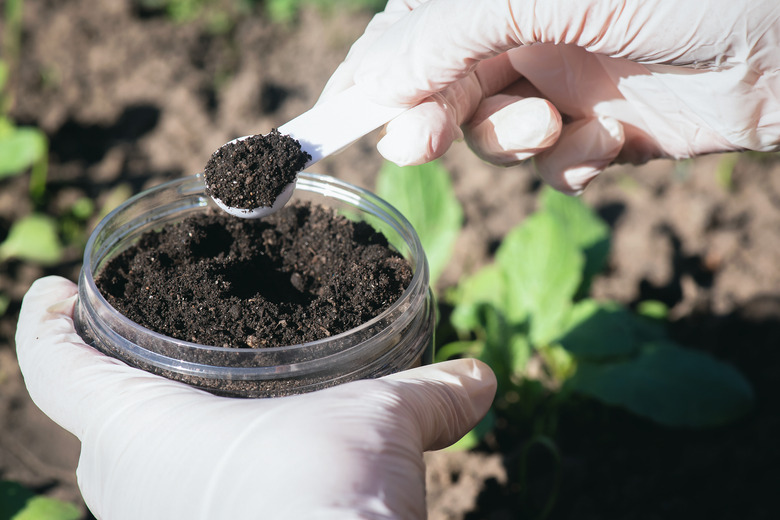3 Types Of Soil Particles Sized From Biggest To Smallest
We may receive a commission on purchases made from links.
Only one type of soil particle can be seen by the naked eye, and that's a sand particle. If you have to get out a microscope to see it, it's either silt or clay, and there you have it: The three types of soil particles, from largest to smallest, are sand, silt, and clay. And you can't view clay with a standard microscope; rather, you need an electron microscope for this tiniest soil particle.
The ratio of the various particulates in a soil defines that soil's texture, one of the many soil properties. This is important because any successful gardening effort depends on the texture of the soil, which has a bearing on what can be grown there and what amendments could be added to improve its texture.
The Three Types of Soil Particles: Soil Texture
The Three Types of Soil Particles: Soil Texture
Soil texture is defined by its ratio of sand, silt, and clay. A common word used to describe a well-textured soil is "loam." If considered to be loam, a soil has a proportion of sand, silt, and clay that will generally support any plant. A soil might also be called "silt loam" if it contains no more than 50 percent sand and 27 percent clay, while the balance is silt.
Some experts also recognize gravel as an additional soil particle. If you do have substantial gravel in your soil, it will feel rocky and rough. To visualize the size of these various particles, consider this: If a particle of clay were the size of a marble, a silt particle would be the size of a golf ball and a sand particle the size of a baseball. If gravel were also present, it would be the size of a basketball.
Soil Texture in Your Garden
Soil Texture in Your Garden
Soil texture is the foundation of any garden or landscape. If the texture isn't conducive to the plants you want to grow, you can try to amend it with appropriate materials to create a more loamy soil — although there's a reasonable limit to how effective this is if your soil is mostly clay or sand at the two ends of the spectrum.
If your soil is the right mixture of sand, silt, and clay, it will be a loam that holds water but still drains well so your plants don't grow in standing water. A sandy soil can't hold moisture because the water just runs down and out of the soil. A clayish soil has such fine particles with so little space between them that there's little opportunity for water to pass through and out.
A clayish soil can benefit from the addition of sawdust, leaf mold, manure, compost, or peat moss. A too-sandy soil can be improved primarily with compost and other organic materials that can provide nutrients to your plants.
Determining the Texture of Your Soil
Determining the Texture of Your Soil
If you dig in your garden and come up with a shovelful of compacted soil that retains its shape when you drop it on the ground, your soil is clayish. A loamy soil with a good texture balance will break apart into smaller clumps, while a sandy soil won't hold its form at all.
You can try the finger-test also: Attempt to form a ball with a clump of soil. A sandy soil won't form a ball, while a loamy soil will. To identify a loamy soil versus a clayish soil, try to form a ribbon of about 2 inches in length with a clump of soil pushed between your thumb and forefinger. If the soil is clayish, you'll be able to squeeze it into about a 2-inch-long ribbon, but a loamy soil has too much air in its texture to allow that.
If you want a more accurate analysis of your soil texture, you can send it to a lab for a specific breakdown of the percentages of soil particle types, called a "mechanical analysis." These tests measure the amount of time it takes soil particles to drop to the bottom of a cylinder filled with water. These percentages reveal the specific soil texture.
